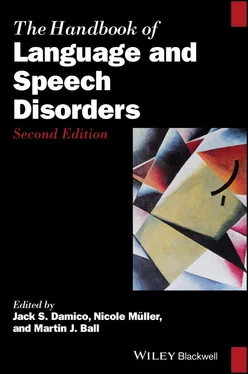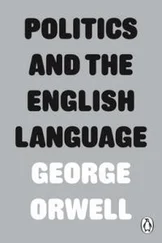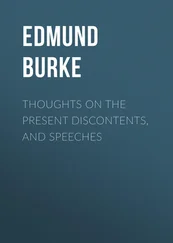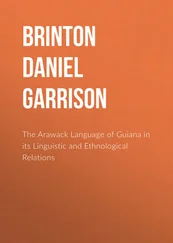In view of such demographics and ongoing shifts and an understanding of its own workforce, ASHA is strategically prioritizing diversity as a distinctive characteristic of its members (by recruiting a more diverse workforce) and as an acquirable skill, by promoting SLPs’ education on diversity issues via both standard and lifelong education and encouraging a clinical practicum on a variety of minority groups that exhibit different types of diversity (ASHA, 2010). Internationally, “guiding documents and conference topics” indicate that this is a vital concern in the field worldwide (Threats, 2010). CPLOL, together with national organizations around the world, similarly place increasing emphasis on multicultural/lingual and other diversity issues in their position statements.
2.3 What is There and What is Missing
A meta‐analytic overview of various types of MMI courses in CSD departments, supported by a nationwide survey with faculty write‐in responses on the content of MMI curricula in the US, showed that there is a lack of balance in the representation of theory and application, as some curricula favor one aspect over the other (ASHA, 2019b). As such, MMI content is not available on a widespread basis in academic level instruction, it often tends to be an elective rather than a mandatory course, and there is also no unanimously agreed‐upon syllabus for MMI in the current professional instruction of SLPs (and audiologists).
There are a number of publications that may be used to serve as resources for diversity instruction in speech and language pathology. Some of them may serve as textbooks per se, while others can provide complementary sources. In terms of textbook materials, Goldstein (2000) is an early textbook in the field that bridges the gap between research and clinical practice in SLDs; the book includes information on normative data, assessment techniques, intervention approaches, and resources. Hyter and Salas‐Provance (2019) is a recent monograph that shifts the emphasis toward cultural competence as an acquirable skill and on the importance of institutionalizing culturally responsive practices in speech, language, and hearing sciences. A sociolinguistic background to diversity considerations may be found in Ball (2005), which consists of various topics on cultural and linguistic diversity as they pertain to clinical contexts.
There are also several edited volumes showcasing research whose scope touches upon diversity issues in SLDs. The collection of articles by McLeod and Goldstein (2012) discusses Multilingual Aspects of Speech Sound Disorders in Children that involve several languages and dialects, differences in how speech acquisition and disorder manifest cross‐linguistically, and the significance of considering such differences in diagnosis, assessment, and intervention. Babatsouli, Ingram, and Müller (2017) bring together studies on under‐represented typical and atypical language acquisition turning diversity into the core theme of the book in terms of linguistic typology, language acquisition types, language context, research methodologies, and assessment tools. The collection by Patterson and Rodriguez (2016) investigates multilingual perspectives in child language disorders in specific clinical populations. Babatsouli (2020) is a new volume that brings together cross‐linguistic research on phonological acquisition as well as assessment and intervention in speech sound disorders. Kohnert (2008), and Paradis, Genesee, and Crago (2011) discuss language disorders in bilingual contexts. Armon‐Lotem, de Jong, and Meir (2015) disentangle bilingualism from language impairment, focusing on assessment in multilingual children.
The contributed chapters in Battle (2012) cover aspects of communication disorders in the traditional racial and ethnic populations of the United States as well as in certain populations around the world like the indigenous peoples of the US and Australia, African diasporas, the peoples of the Caribbean nations, and the peoples of Europe and the Middle East. For a review of resources on indigenous languages, see Bernhardt (2008). Damico and colleagues (Damico & Hamayan, 1992; Hamayan, Sanchez‐Lopez, Damico, & Marler, 2013) address diversity considerations in the classroom and in special education. Winter (2001) attempts an early representation of bilingual children in speech and language therapy, while Shaw and Goode (2005) provide a “minibibliography” on the early identification of CLD children. López, Hofer, Bumgarner, and Taylor (2017) have compiled a resource guide on cultural competency for community‐based service programs which includes, among others, descriptions of resources for identifying critical factors relevant to serving and studying CLD populations, identifying evidence‐based programs, and making cultural and linguistic adaptations to assessment and intervention programs.
Alongside these, there are also several specific older and more recent chapters, reviews, and research articles that address diversity considerations relevant to the theory and practice of SLDs (e.g., Bebout & Bradford, 1992; Cheng, 2007; Docherty & Khattab, 2008; Fabiano‐Smith, 2019; Gildersleeve‐Neumann & Goldstein, 2015; Goral & Conner, 2013; Guiberson & Atkins, 2012; Hoffer, 2007; Hwa‐Froelich & Vigil, 2004; Ingram, 2003, 2008, 2012; McLeod, 2007; McLeod & Crowe, 2018; McNeilly, 2007; Norbury & Sparks, 2013; Oxley, Günhanb, Kaniamattama, & Damico, 2017; Verdon, Blake, Hopf, Pha&c.dotbl;m, & McLeod, 2016; Westby, Dezale, Fradd, & Lee, 1999). Topics covered in these include: cross‐cultural attitudes toward SLDs; the influence of culture in phonetic diversity; the need for standardization of assessment and intervention tests for a variety of SLDs in diverse cultural populations; how linguistic/dialectal diversity and bilingualism affect understanding of SLDs; preparation, practices, and perspectives of SLPs on serving CLD populations; and so forth. Several articles focus on the significance of enhancing cultural competence and its relating constructs (i.e., cultural awareness, sensitivity, humility, EQ, and CQ) in clinical service provision (e.g., Bellon‐Harn & Garrett, 2008; Cheng, 2007, 2009; Griffer & Perlis, 2009; Pickering, 2003; Robertson, 2008; Roseberry‐McKibbin, 2000; Roseberry‐McKibbin & O’Hanlon, 2005; Verdon, Blake, et al., 2016; Westby, 2007).
Though this literature review is not exhaustive, and it is not meant to be comrehensive due to space limitations, it serves to point out the fact that, as far‐ranging as the topics covered may be, there is no single manual that comprehensively tackles and addresses learning objectives, standards, and required materials for MMI instruction in SLDs, or communicative disorders in general.
2.4 Identifying an MMI Curriculum
Having a mind for diversity and, by extension, being able to provide apposite and applicable clinical service delivery requires a specification of what counts as MMI‐related know‐how and aptitude. Such specification criteria include (a) knowledge of facts and theory , (b) an understanding of how such knowledge relates to applications , and (c) a capacity for intercultural communication, that is, intercultural competence or responsiveness . To elucidate, factual information entails numerical data (statistics) on patterns of globalization, demographics, and how economics and politics affect health‐related policies, aspects of which are rudimentarily showcased in Section 2.2. Theoretical information ( Section 2.5) includes a demarcation of principal themes in the following topics: culture and cultural diversity, language and linguistic diversity, learner ability, bilingualism, accent, and a transparent link that connects these to SLDs. Applications ( Section 2.6) include diffusion of research advances and their implications for assessment and therapy methods, accent modification, and the function of interpreters and/or bilingual service providers. Last, intercultural competence ( Section 2.7) involves learning to deal with universal or unique (to specific groups) cultural characteristics, alongside investigating SLP attitudes, and finding ways to minimize cultural barriers (Kim, 2019) and unconscious bias in SLP–client interaction. These are outlined in more detail in the following sections.
Читать дальше












